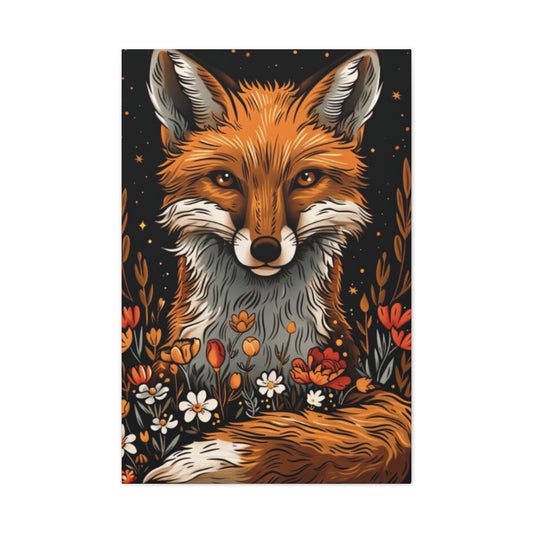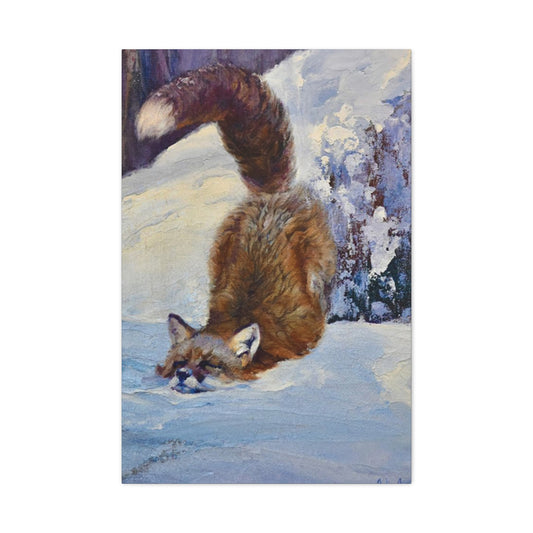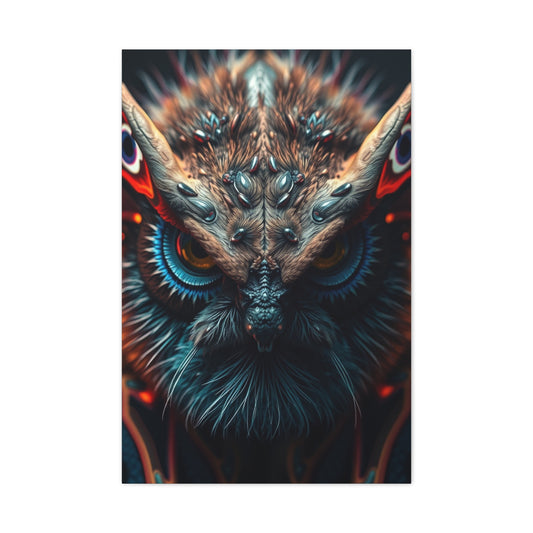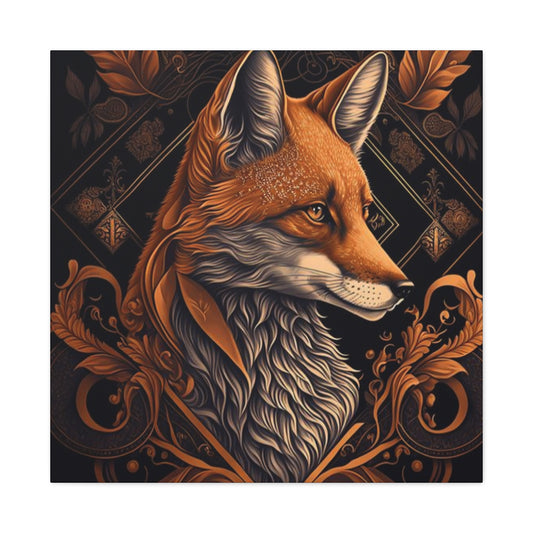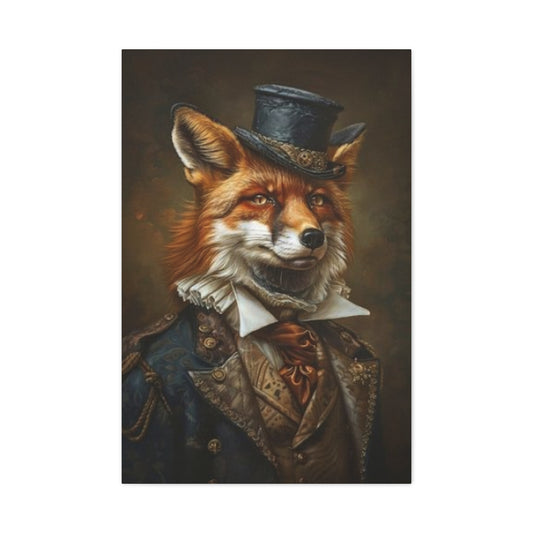The living room is the heart of your home—a haven where memories are created, stories are shared, and comfort takes center stage. As the central gathering point, it deserves more than just furniture and lighting—it calls for personality and style. Infusing your space with thoughtfully chosen wall art can instantly transform your living area into a striking showcase of creativity and self-expression. If you're yearning to invigorate your living room with personality and visual intrigue, explore these top 15 painting ideas for 2025, each tailored to spark joy and elevate design sensibilities.
Reinventing the Present: Modern Masterpieces
Modern paintings are the quintessential choice for homeowners looking to inject life and freshness into their living room. These avant-garde designs are characterized by their bold brushstrokes, inventive color schemes, and often abstract forms that challenge conventional decor. A centrally placed contemporary canvas can serve as a lively focal point, anchoring the room with flair and individuality.
Classical Roots, Contemporary Wings
Give time-honored artworks a modern twist by reinterpreting them in vibrant hues or unexpected textures. Iconic paintings can be reimagined to complement today's eclectic interiors. Set against a charcoal or navy accent wall, these revamped classics become the pièce de résistance in your lounge, offering both nostalgia and novelty.
Bridging Eras: Vintage Meets Visionary
Celebrate the elegance of bygone eras while embracing the spirit of innovation. Integrate timeless motifs like pastoral scenes or Renaissance figures with modern furnishings and eclectic accents. This blend of old and new adds a layered narrative to your interior, making the space feel curated rather than simply styled.
Tranquility on Canvas: Zen Aesthetics
Turn your living room into a sanctuary of serenity with Zen-inspired wall art. Paintings featuring lotus blossoms, bamboo groves, or ethereal landscapes in soft, muted tones can promote inner peace. Pair these visuals with soft furnishings and natural elements like rattan, linen, and potted greenery to complete the harmonious ensemble.
Compact Canvases with Grand Impact
Small living rooms benefit immensely from well-placed compact paintings. Whether nestled in reading corners or above slender credenzas, these smaller artworks can still pack an emotional and visual punch. Look for pieces with vivid typography layered over abstract backdrops to maximize presence without overwhelming the space.
Dynamic Displays: Multi-Panel Layouts
For those who enjoy symmetry and visual rhythm, multi-panel paintings provide both structure and flair. A series of connected canvases can depict a single sweeping landscape or an abstract progression of shapes and colors. Ideal above expansive sofas or along corridor-like walls, these arrangements add dimensional interest.
Oversized Art for Dramatic Effect
Nothing commands attention like a colossal canvas. A larger-than-life painting, whether expressionist or photorealistic, becomes a powerful visual anchor. Vibrantly colored oversized pieces can amplify energy and mood, making them perfect for homes that thrive on sociability and exuberance.
Subtlety in Strokes: Minimalist Styles
Minimalism continues to dominate design sensibilities in 2025, and minimalist wall art fits seamlessly into this ethos. Choose artwork that emphasizes negative space, light textures, and monochromatic palettes. These pieces exude calm while still making an aesthetic impact, enhancing the room without overpowering it.
Choreography of Geometry
Harness the harmony of shapes with geometric paintings. Interlocking patterns and clean lines can inject a sense of balance and sophistication into your living room. Whether in vibrant colorways or subtle tonal gradients, geometric artwork introduces structure with a creative twist.
Tailoring Art for Multipurpose Living Areas
For homes where the living room merges with the kitchen or dining area, opt for artwork that can straddle both functionality and flair. Classic advertising prints, still life compositions, or rustic illustrations can serve as versatile visual connectors that bring cohesion to open-plan spaces.
Art Direction: Vertical vs. Horizontal Orientation
The orientation of your artwork dramatically alters its spatial influence. Vertical pieces lend elegance and draw the eye upward, making ceilings appear loftier. Horizontal works create a sense of expanse and are ideal for anchoring long stretches of wall, particularly above furniture like consoles or sectionals.
Splashes of Whimsy: Playful Minimalism
Minimalism doesn't have to mean monotonous. Paint-splatter compositions or abstract doodles in neutral tones add a touch of whimsy without sacrificing sophistication. These artworks are perfect for creative homeowners who want to blend fun with finesse.
Cool Serenity: Blue-Themed Paintings
Blue remains a perennial favorite in home decor, thanks to its calming properties. Whether rendered in soft sky tones or deep indigos, blue-themed artwork evokes tranquility. It pairs beautifully with both crisp whites and earthy tones, adapting effortlessly to various decor styles.
Lush Botanical Inspirations
Green-themed paintings are surging in popularity due to their fresh, organic feel. Verdant foliage, tropical leaves, and nature-inspired abstracts can invigorate your living room. They also pair beautifully with wooden accents and sustainable materials, creating a biophilic ambiance.
The Power of Neutrals: Understated Elegance
Neutral-toned paintings offer timeless elegance. Shades like sand, ivory, and slate can visually expand your space while fostering a calming environment. Choose canvases with metallic elements or tactile textures to add depth and glamour without disrupting the room's subtlety.
By curating your living room with thoughtfully selected wall art, you’re not just decorating; you’re narrating a story through visuals. From serene Zen imagery to bold contemporary pieces, let each brushstroke echo your personal style and set the tone for a space that truly feels like home.
Contemporary Charisma: Revitalize Your Living Room with Modern Paintings
Modern design is no longer just an aesthetic—it has evolved into a full-fledged philosophy of living. It celebrates clarity over clutter, expression over imitation, and artistry over convention. In this age of personalization and self-curated spaces, the living room has emerged as a sanctuary where contemporary artwork thrives, lending character, color, and a whisper of the unexpected.
Whether you’re nurturing a minimalist haven or styling a cosmopolitan loft, integrating modern paintings into your living room can bring about a spirited transformation. These expressive visuals serve as bold statements, emotional conduits, and conversation catalysts. With the right selection of Wall art, your living space can effortlessly mirror your personality while embracing the ever-evolving language of contemporary design.
Reimagining Space with Modern Expression
At the heart of contemporary interior styling lies an invitation to embrace experimentation. Forget ornate gilded frames and pastoral scenes—today’s modern wall décor is about rhythm, movement, and mood. Abstract pieces dripping with vibrant hues or minimalist linework sketched across monochrome canvases can utterly reshape the vibe of a room.
The appeal of such pieces lies in their ambiguity. Abstract art invites interpretation, allowing each viewer to engage with it on a deeply personal level. This emotional connection breathes life into your living room, offering more than just visual beauty—it becomes an experience. A single, large-format Wall art canvas anchored above your sofa can function as the soul of the space, tying together disparate elements like furniture, textiles, and architectural features.
Geometry, Texture, and Mixed Media
Contemporary paintings often incorporate unexpected materials and structures, giving them an alluring, almost sculptural quality. Think thick impasto layers, shimmering metallics, or geometric motifs rendered with glass, resin, or fabric accents. These pieces break free from the two-dimensional and become dynamic focal points.
Look for works that play with contrast—matte versus gloss, rough versus smooth, dark against light. The interplay of textures and tones injects your living room with sophisticated depth, engaging the senses far beyond simple aesthetics. Paired with streamlined furniture and ambient lighting, these paintings lend your room an avant-garde edge without overwhelming the senses.
Chromatic Brilliance or Muted Minimalism
Color in contemporary painting is not merely decorative—it’s declarative. If your living room lacks luster or feels too monochromatic, an energetic Wall art piece bursting with fuchsia, cobalt, saffron, or chartreuse can act as a jubilant punctuation mark. On the other hand, if you prefer a more subdued, meditative space, opt for contemporary paintings in earthy neutrals, dusky pinks, slate blues, or mossy greens.
These hues not only support the mood you wish to cultivate but also unify the palette of the space. A thoughtfully chosen piece of art can serve as a chromatic bridge between your rug, curtains, and upholstery, subtly linking each design element into a harmonious whole.
Personalization through Curation
Gone are the days of rigid gallery rules. Today, your wall is your canvas—and you are the curator. Contemporary art gives you permission to mix, match, and layer with abandon. Consider arranging a salon-style wall of smaller pieces, each with distinct but complementary themes. This kind of curated chaos feels intimate and expressive, the perfect counterbalance to overly sterile design.
Alternatively, go bold with a single large statement piece that commands the room’s attention. Think of a massive contemporary painting as your room’s visual crescendo—something that establishes tone and anchors every other design choice.
With Wall art, you’ll find a range of curated collections suited to every taste and temperament, from the quietly contemplative to the unapologetically bold. Whether you lean toward gestural brushstrokes or pixelated surrealism, you can find a piece that speaks your design language fluently.
Create Mood through Artistic Energy
More than just adornment, contemporary paintings help establish emotional cadence within your space. Angular compositions in primary hues can spark energy and confidence, making them perfect for social spaces or home offices that demand mental agility. In contrast, flowing, organic shapes in watercolor palettes can soothe and relax, ideal for cozy corners or meditation spaces within the living room.
Through careful curation, modern art can influence the emotional resonance of your environment. It becomes a tool, not just for style, but for well-being.
Pairing Modern Art with Diverse Décor Styles
The beauty of contemporary art is its versatility. While it naturally complements modern or industrial spaces, it can just as effortlessly coexist with rustic, bohemian, or even classical design motifs. A vibrant, graffiti-style piece can serve as a delightful juxtaposition in a room filled with antique furniture. Likewise, a minimalist black-and-white line drawing can create visual breathing space in an eclectic, pattern-rich setting.
The contrast between old and new invites visual dialogue. It’s this type of thoughtful interplay that elevates a living room from ordinary to extraordinary.
Final Flourish: Let Your Walls Speak
When thoughtfully chosen, contemporary paintings do more than embellish a room—they animate it. They carry stories, provoke thought, and often, stir emotion. A well-placed work of modern art isn’t just a decorative flourish; it’s a personal declaration, an invitation into your worldview.
Incorporating Wall art allows you to stay at the forefront of design trends while remaining true to your individuality. Whether you gravitate toward visual cacophony or quiet contemplation, the right artwork provides resonance, charm, and balance.
So as you reflect on how to refresh your living space, let your walls lead the way. Embrace the now. Embrace the bold. Embrace the boundless possibilities of contemporary paintings.
Old World Meets Avant-Garde: Classic Masterpieces in a Modern Light
In today’s interiors, the marriage of timeless elegance with bold modernism is not only desirable—it’s transformative. One of the most compelling trends redefines classical artistry through a contemporary lens, infusing historic masterpieces with new vitality. The fusion of fine art and modern design creates interiors that are both rooted in cultural depth and daringly current. At the heart of this movement is the strategic placement of reimagined classical Wall art—works inspired by the Renaissance, Baroque, or Romantic periods—set against unconventional, often moody, backdrops.
This design narrative is far more than aesthetic layering. It is a revival of visual storytelling, where each brushstroke from the past gains a new perspective when placed within present-day interiors. By blending the dramatic essence of Old World paintings with contemporary elements—such as matte black furniture, industrial lighting, and abstract accents—you breathe fresh life into heritage without diminishing its soul.
Picture the haunting intensity of Caravaggio’s chiaroscuro bathed in the ambient glow of minimalist pendant lights. Or the delicate allure of Botticelli’s ethereal figures juxtaposed against deep navy or slate grey walls, making their presence even more magnetic. These pairings elevate the emotive power of classic compositions and introduce a subtle tension that captivates the viewer.
One of the most impactful ways to embrace this stylistic interplay is by opting for reinterpretations of iconic works. Modernized renditions of classics—perhaps re-colored, fragmented, or digitally enhanced—offer a rebellious elegance that aligns beautifully with today’s preference for personalized interiors. These aren’t just reproductions; they are artworks in their own right, paying homage to the original while asserting a unique identity. Whether it's a pixelated version of Da Vinci's Mona Lisa or a surreal twist on Vermeer’s Girl with a Pearl Earring, these Wall art pieces act as cultural dialogue between eras.
Framing plays an equally important role in this aesthetic. Choose ornate, gilded frames to lean into the classical origin of the artwork, especially when placed in starkly minimalist settings. This contrast amplifies both elements: the intricate frame gains prominence against a sleek backdrop, while the modern space becomes more layered and evocative. Alternatively, opt for frameless or floating mount styles if you wish to highlight the reinterpretation over the heritage.
To anchor these statement pieces, wall color becomes essential. Rich, saturated tones such as charcoal, forest green, or oxblood red create a theatrical setting that enhances the emotional depth of fine art. These hues evoke the same brooding intensity often found in classical works, further connecting your contemporary space with centuries-old craftsmanship. Meanwhile, pairing these darker tones with warm metallics like brass or antique gold introduces an aristocratic edge that feels both luxe and lived-in.
Texture and materiality matter just as much. Consider juxtaposing your chosen artwork with tactile finishes—plush velvets, natural stone, distressed leather—to echo the opulence often seen in historical settings. These sensory layers add depth to your interiors and reinforce the narrative quality of the artwork. Think of a Renaissance portrait flanked by velvet drapes and a sculptural, modern chaise lounge—it’s museum-like grandeur without the formality.
Another creative avenue is to curate a gallery wall that mixes classical-inspired pieces with more avant-garde designs. Intermingle figurative works with abstract paintings, minimalist sketches, or even typographic posters. The result is a sophisticated collision of epochs—a curated chaos that reflects the complexity of modern identity. It’s no longer about purity of style, but rather the celebration of contrasts.
Lighting is an unsung hero in this style journey. The right lighting can dramatically alter the mood of your display. Picture directed spotlights mimicking gallery aesthetics, casting gentle shadows that heighten the mystery of a moody portrait. Or use diffused, ambient lighting to soften the presence of bolder artworks, ensuring they harmonize with the rest of the room rather than dominate it.
Scale is another factor not to be overlooked. Large-scale reimaginings of classical Wall art lend a grand, immersive quality to interiors, especially in rooms with high ceilings or open layouts. These pieces can define the entire tone of a space, inviting closer inspection and evoking a sense of reverence. Conversely, a petite, exquisitely detailed portrait on a reading nook wall offers intimacy and subtle charm.
For those with a keen appreciation for cultural nuance, consider regionally significant art styles that echo classical traditions. A Greek mythological fresco reinterpreted with contemporary flair, or an Indian Mughal miniature art digitally enhanced with metallic ink, blends heritage and innovation in a deeply respectful way. These pieces celebrate global artistry while still resonating with the modern viewer.
What makes this décor strategy truly timeless is its ability to honor the emotional resonance of classic art while aligning it with the ever-evolving aesthetics of the present. It's a tribute to the masters, yes—but it's also a statement of individuality, an acknowledgment that art lives through reinterpretation, through dialogue between then and now.
As with any design direction, personalization is paramount. Choose pieces that move you, that speak to your sensibilities and reflect your intellectual curiosity. Whether you're an aficionado of Renaissance portraiture or intrigued by mythological symbolism, allow your taste to shape the gallery you create at home.
In a world increasingly defined by fast-paced trends and disposable style, curating a space around reimagined classical Wall art provides grounding—a tangible link to human history, emotion, and beauty. It is a refined rebellion, a way to break the mold without sacrificing sophistication.
So let the brushstrokes of the past guide your aesthetic future. Let your walls whisper tales of antiquity in a language rewritten by the now.
Timeless Meets Trendy: Curating Interiors Where Heritage Dances with Modernity
In the evolving lexicon of interior design, few approaches offer the gravitas and charm of stylistic fusion. Today’s most captivating spaces are no longer strictly modern or rigidly traditional; instead, they’re harmonious hybrids, where aged elegance collides beautifully with avant-garde elements. This design philosophy celebrates contrast and cohesion simultaneously, where vintage grandeur is punctuated by sleek innovation. It is in this layered, story-rich aesthetic that the home truly becomes a curated narrative. And nothing underscores this visual dialogue more potently than the pairing of classic Wall art with an eclectic blend of furnishings.
The essence of this style lies in its intentional dichotomy. Picture a gilded Renaissance portrait presiding over a minimalist console in matte black. Or a regal Baroque frame sharing wall space with an abstract canvas bursting in contemporary hues. These seemingly paradoxical combinations create a visual tension that excites the eye and stirs curiosity. Rather than clash, the pieces converse—each element echoing its own era while engaging in a timeless dialogue.
Wall art plays a pivotal role in this design tapestry. Classical pieces lend a sense of gravitas and historical continuity. Think of majestic landscapes, romanticized still lifes, or neoclassical figures painted with precision and emotional depth. These artworks root a space in tradition, offering gravitas and sophistication. When contrasted with today’s design staples—modular furniture, acrylic chairs, terrazzo tables—the juxtaposition heightens both old and new.
What truly elevates this aesthetic is the layering of textures and finishes. Antique wood with visible patina can be set against smooth lacquered surfaces. A Victorian tufted chaise might rest beside a geometric glass coffee table. The interweaving of worn leather, brushed brass, raw linen, and polished stone allows each material to shine through in its own right, contributing to a space that feels storied yet forward-thinking.
Lighting, as always, is key to unifying diverse elements. Traditional chandeliers or sconces with modern LED enhancements blur the lines between past and present. Sculptural table lamps placed near vintage Wall art allow for spotlighting that feels intentional and layered. Likewise, the strategic use of recessed lighting can illuminate historical details—like crown molding or carved woodwork—while enhancing the minimalism of modern pieces nearby.
The success of this fusion lies in its curation. It’s not simply about collecting objects from different eras—it’s about creating meaningful vignettes where each element enriches the others. A mid-century armchair beneath an 18th-century pastoral painting tells a richer story than either could alone. A Bauhaus-inspired credenza showcasing delicate porcelain heirlooms becomes a dialogue between utility and ornamentation.
Functionality also plays a role in how this aesthetic takes shape. Modern conveniences—smart home tech, minimalist storage, ergonomic furniture—can be seamlessly integrated into older structures. Think hidden chargers in antique nightstands, or surround-sound systems subtly installed behind carved wall panels. This quiet innovation supports the philosophy of respecting the past while enhancing the present.
For those starting the journey into this hybrid aesthetic, Wall art serves as a perfect anchor. Begin with a piece that speaks to your sensibilities—a vintage map, a classic portrait, or a romanticized landscape—and build the surrounding decor to either harmonize or contrast. Alternately, start with a bold contemporary piece and juxtapose it with antique finds from flea markets, estate sales, or family heirlooms. Balance is key; let each piece breathe and contribute without overwhelming.
Sustainability is an unspoken virtue in this approach. By repurposing antique furnishings and incorporating vintage Wall art, you are participating in a design trend that values longevity and environmental mindfulness. These elements have withstood the test of time not only in durability but in relevance, proving that great design transcends trends.
Ultimately, blending the traditional with the contemporary is about creating resonance. It’s about finding beauty in contrast, depth in diversity, and personality in paradox. When done thoughtfully, this aesthetic invites admiration not just for how a room looks, but for what it represents—a celebration of evolution, legacy, and individuality.
Let your home reflect that same dual spirit: a canvas where time-honored elegance and bold innovation dance together in perfect harmony, with Wall art guiding the way as both a historical anchor and a contemporary muse.
Tranquil Living: Cultivating Serenity with Zen-Inspired Wall Art
In an increasingly chaotic world, the allure of a serene, meditative home sanctuary is more powerful than ever. Zen-inspired interiors offer a tranquil haven where one can unplug, reflect, and reconnect with the self. At the heart of this minimalist yet soulful approach is a curated selection of soothing elements—natural textures, calming color palettes, organic forms, and perhaps most importantly, intentional Wallpapers that captures the essence of peace and mindfulness.
Zen design is not just about minimalism; it is about balance. Originating from traditional Japanese aesthetics and Buddhist philosophy, Zen interiors promote simplicity with purpose. There is a deliberate absence of clutter, not for aesthetic reasons alone, but to allow space for introspection and mental clarity. Every item in the room must earn its place—and Wallpapers becomes a key player in shaping the emotional energy of your space.
Begin with a neutral color scheme that mimics the tranquility of nature: think soft sand, dove grey, pale stone, and warm off-whites. These subdued tones create a gentle canvas that helps quiet the mind and opens the door to relaxation. On this muted foundation, introduce Wall art that embodies natural motifs and contemplative compositions—delicate lotus blossoms, still water, mountain silhouettes cloaked in fog, or a single sweeping brushstroke reminiscent of Japanese calligraphy.
The lotus, in particular, holds profound symbolic weight in Zen philosophy. Representing purity, renewal, and spiritual awakening, lotus-themed artwork is perfect for spaces meant to encourage mindfulness and rejuvenation. A soft watercolor rendering of a lotus bloom or a minimalist ink sketch set in a simple wood frame can be placed above a meditation cushion, beside a soaking tub, or even as the visual anchor in a restful bedroom.
Minimalist landscapes also shine within Zen interiors. Monochrome prints of bamboo groves, winding rivers, or distant peaks enveloped in mist evoke a quiet reverence for the natural world. Unlike busy or overly detailed art, these pieces encourage the viewer to pause and engage with the space in a contemplative way. Choose Wall art made from sustainable materials to stay aligned with the Zen emphasis on harmony with the Earth.
Layered textures further enhance the meditative atmosphere. While the color palette remains understated, tactile richness plays a pivotal role in preventing sterility. Tatami mats, stone-textured walls, linen upholstery, and jute rugs offer a sensory counterpoint to visual simplicity. A sculptural wooden bench or reclaimed driftwood shelf can add depth and warmth. Meanwhile, your art pieces should be framed in natural finishes—light ash, dark walnut, or even bamboo—for a cohesive look.
A Zen interior would not be complete without a connection to living nature. Lush indoor greenery, such as bonsai trees, peace lilies, or snake plants, reinforce the flow of life energy and bring the outdoors in. These plants not only elevate the space visually but also contribute to air purification and ambient moisture regulation—key elements in creating a healthier home. Placing a piece of serene Wall art near a potted bamboo plant or an arrangement of air plants adds poetic resonance to the décor.
Lighting in Zen-inspired interiors is soft and diffused. Avoid harsh overhead bulbs in favor of natural daylight, lantern-style floor lamps, and shoji-inspired paper sconces. Dimmable fixtures are ideal, as they allow for mood shifts throughout the day—from invigorating brightness in the morning to ambient calm at night. Position your chosen Wall art where natural light can highlight its textures and subtle hues, inviting daily interaction with its quiet beauty.
In larger spaces, opt for diptychs or triptychs that break the wall into contemplative segments, each piece contributing to a larger story of stillness. Alternatively, a single, oversized canvas depicting a Zen garden or abstract meditative strokes can command attention without creating visual noise. Remember that negative space is not empty in this context—it is the breath between the notes, essential to the composition.
For those who engage in regular mindfulness practices, setting up a dedicated nook can deepen the experience. A simple floor cushion, a small wooden altar with a candle or incense burner, and a piece of Wall art that serves as a visual mantra form a powerful trio. Whether you choose a print of enso circles (symbolizing enlightenment and the universe) or a serene horizon line fading into the fog, your artwork becomes both anchor and inspiration for your practice.
Even in functional rooms like the bathroom or kitchen, Zen design can bring a sense of grace and calm. In these areas, opt for small-scale artwork such as a quiet bamboo sketch or a black-and-white photograph of stone cairns. Pair them with raw ceramic vessels, river stones, or wooden bowls to create micro-moments of Zen.
Ultimately, the goal of incorporating Zen-inspired Wall art into your home is not only to beautify but to harmonize. Every brushstroke, every hue, every form should encourage stillness and elevate your space beyond the merely decorative. This is art that nourishes the spirit, that calls you back to center, and that transforms your home into a sacred space of calm.
By embracing this aesthetic, you craft more than a room—you cultivate an experience. One that invites clarity, encourages balance, and fosters inner peace.
Compact Creativity: The Charm of Petite Paintings in Small Spaces
In a world where sprawling interiors and vast gallery walls often dominate the décor conversation, small spaces are frequently overlooked when it comes to impactful art. But the truth is, even the most modest alcove or studio apartment can radiate personality and sophistication with the thoughtful placement of petite paintings. These small-scale wonders may lack in size, but they’re rich in presence—proving that wall art need not be grand to be transformative.
Whether you're decorating a city flat, a cozy reading nook, or simply adding dimension to an underutilized hallway, compact artworks offer a charming solution. They are particularly ideal for those who believe in curating every inch of their home with intention, ensuring that even the smallest walls whisper with style and story.
The Art of Scaling Down Without Sacrificing Style
One of the most enchanting aspects of small wall art is its ability to anchor a space without overwhelming it. While larger canvases dominate attention, petite paintings invite closer inspection. Their intimate scale creates a personal connection with the viewer, encouraging moments of quiet appreciation.
A diminutive abstract composition, a detailed landscape, or a splash of vibrant color set against a neutral wall can become the visual nucleus of a small room. These pocket-sized masterpieces not only inject personality into compact corners but also play a crucial role in enhancing spatial flow. When chosen carefully, they can create rhythm and balance, drawing the eye without cluttering the environment.
Strategic Placement for Maximum Impact
When it comes to compact spaces, strategic placement is paramount. Rather than attempting to replicate the layout of a larger room, think vertically, diagonally, or asymmetrically. Hanging petite paintings in a tight grid or staggered pattern along a narrow hallway can create a gallery-like corridor that feels curated rather than crowded.
In kitchens and bathrooms—often overlooked for art displays—small pieces of Wall art offer unexpected delight. A miniature canvas featuring botanical motifs or cheeky typography near a coffee station or vanity mirror can bring whimsy and charm. Entryways also benefit from a focal artwork that sets the tone of the home without intruding on limited square footage.
Bookshelves, mantels, and side tables present ideal perches for smaller framed artworks as well. Leaning petite pieces against walls or layering them among personal objects adds a lived-in, layered aesthetic that feels authentic and eclectic.
Themes That Shine in Small Formats
When working with limited dimensions, visual clarity and thematic precision become even more important. Small paintings benefit from compelling focal points—imagery that speaks volumes without relying on size to command attention. Here are a few themes that work especially well in compact compositions:
-
Typographic Designs: Words carry weight, especially when artfully arranged. A short, evocative phrase in stylized typography can resonate deeply and become a daily affirmation.
-
Minimalist Motifs: Line art, silhouettes, and single-subject compositions can achieve a serene elegance when presented in a small format.
-
Micro-Landscapes: Tiny portrayals of nature—think misty forests, alpine cabins, or desert scenes—can transport the imagination, even in limited square footage.
-
Abstract Expressions: Swirls of color or fragmented geometry bring movement and intrigue to tighter spaces without overpowering the room.
-
Vintage Illustrations: Old-world etchings or retro advertising prints offer visual nostalgia and are particularly well-suited to gallery wall configurations.
Each of these themes carries emotional depth and visual intrigue, offering a unique lens through which to experience a space.
Pairing Petite Paintings with Interior Style
Petite wall art is wonderfully adaptable, working across a wide spectrum of design aesthetics. In minimalist interiors, a single modest painting hung against a whitewashed wall evokes simplicity with intention. In bohemian environments, layered small pieces in vibrant hues can be mixed and matched to create maximal impact in miniature scale.
For industrial lofts, petite black-and-white photography or architectural sketches work beautifully. In farmhouse-style homes, weathered wood frames and pastoral imagery can tie the rustic theme together without overwhelming the layout. And in contemporary dwellings, metallic frames and abstract visuals in striking colorways lend an art gallery sensibility to the space.
Regardless of your chosen aesthetic, the key is curation. Instead of cluttering your small space with multiple large décor items, focus on meaningful miniatures that reflect your personality and sensibility.
The Joy of Collecting and Rotating
Another joy of petite wall art is the ease with which it can be collected, moved, and reimagined. Unlike oversized canvases that often demand permanence, smaller pieces allow you to be experimental and spontaneous. You can rotate your artwork seasonally, shift pieces between rooms, or rearrange them to match changing moods and color palettes.
Wall art in compact form also invites storytelling. Each painting can serve as a visual memento—collected during travels, inherited from loved ones, or discovered in local markets. Over time, these tiny treasures build a visual biography of your taste and experiences.
In rental spaces where wall space may be limited or restrictions exist on drilling and hanging, petite pieces offer an ideal compromise. They can be leaned on shelves, perched on desks, or mounted with removable strips—adding artistry without permanence.
Making Small Walls Feel Grand
Perhaps the most beautiful truth about petite paintings is that their charm lies in their quiet power. They remind us that grandeur isn’t always necessary for emotional impact. When thoughtfully chosen and mindfully arranged, even the smallest artworks can make a small room feel complete.
So, the next time you find yourself staring at a bare sliver of wall or an underused corner, consider adorning it with something refined and radiant. Let a petite piece of Wall art transform that overlooked space into a point of joy and inspiration. In the world of interior design, size may be measurable—but style, soul, and storytelling are boundless.
Multipanel Displays for Maximum Impact
For a striking visual narrative, explore multi-panel arrangements. Whether symmetrically balanced or intentionally asymmetrical, these canvases exude a gallery-worthy aura. A wave-inspired four-panel layout, for example, brings fluidity and movement to a static wall.
Oversized Statements with Vivid Color
Dramatic and daring, large-scale wall art brimming with color can radically transform your space. Choose paintings that stretch across your primary seating area to captivate the eye and invigorate the atmosphere. When it comes to size, bigger is often better.
Refined Layouts with Abstract Minimalism
Minimalist brushstroke paintings offer universal compatibility with various styles. Their subtle textures and elegant designs complement everything from Scandinavian-inspired interiors to bold industrial spaces. It’s sophistication without the fuss.
Geometric Shapes and Structured Symmetry
Geometric artwork brings structure and precision to your space. Opt for bold lines and contrasting hues in a series of angular panels. These modern pieces are perfect for adding a hint of rhythm and order to a cozy corner or expansive wall.
Curated Art for Dual-Purpose Rooms
For living areas that double as dining spaces or kitchen extensions, choose paintings that harmonize with a more refined theme. Vintage-inspired illustrations or retro advertisements are perfect for unifying multi-use rooms with nostalgic charm.
Choosing Between Vertical and Horizontal Layouts
Your space dictates the orientation of your artwork. Narrow walls and towering ceilings benefit from vertical compositions, which draw the eye upward. For wide, open walls, horizontal pieces create a grounded, panoramic effect. Blend both for a gallery-style experience.
Modern Minimalism with a Playful Twist
Paint-splatter art makes a bold, expressive statement. With roots in pop culture and fine art, these compositions celebrate spontaneity and color. Perfect for modern minimalists looking to inject personality without overwhelming the senses.
Cool Blue for a Soothing Ambience
A cooler palette brings peaceful elegance to any living room. Blue, in all its shades, is the ultimate color for those seeking serenity. Whether in gentle washes or striking streaks, blue-toned artwork introduces a refreshing calm that aligns beautifully with both rustic and modern aesthetics.
Greenery as Visual Nourishment
Embrace the natural world with verdant, plant-inspired artwork. Green wall art channels vitality, wellness, and balance. Botanical-themed paintings enliven your space while creating an organic aesthetic that feels both trendy and timeless.
Understated Glamour with Neutral Palettes
For a polished, airy living room, choose art that relies on neutral tones. Shades of ivory, beige, taupe, and soft greys lend an understated elegance. Elevate these hues with flecks of gold or silver for a whisper of glam without overt opulence.From vibrant contemporary creations to serene zen-like serenity, each of these painting ideas offers a unique pathway to redefining your living space. Whether you favor bold color, minimalist elegance, or timeless sophistication, Wall art can provide the missing piece that completes your design vision. Let your living room reflect your story—one brushstroke at a time.













